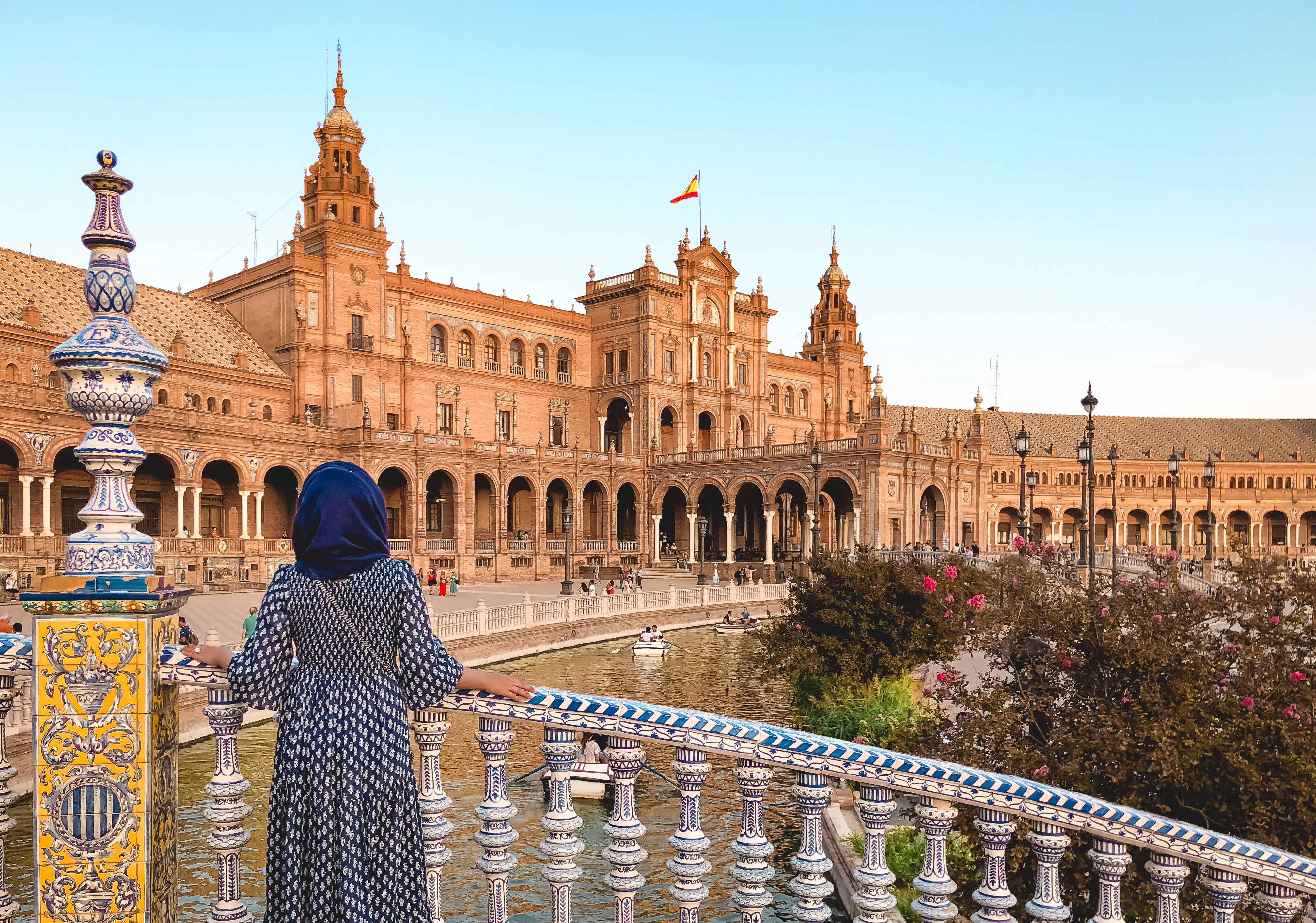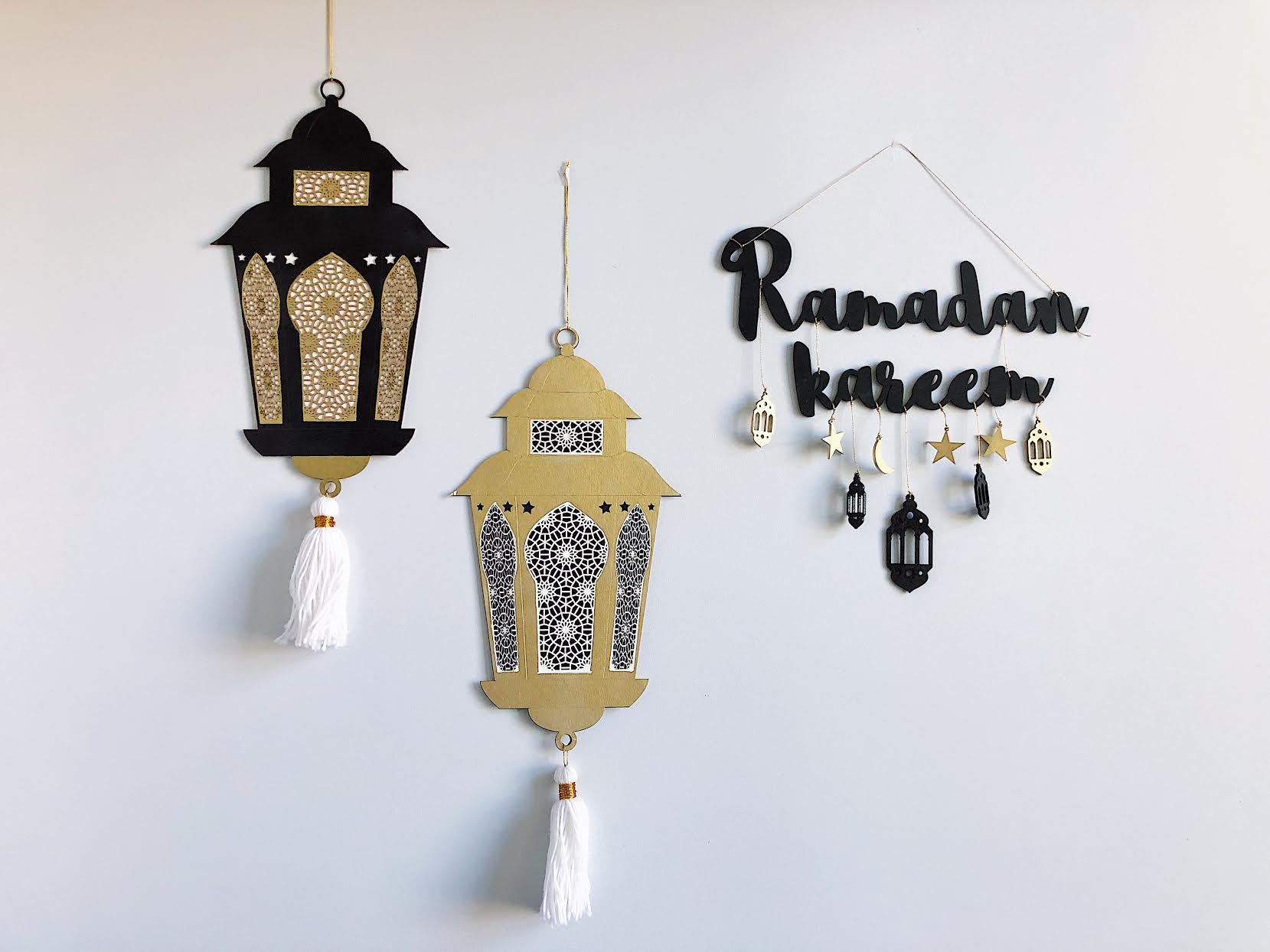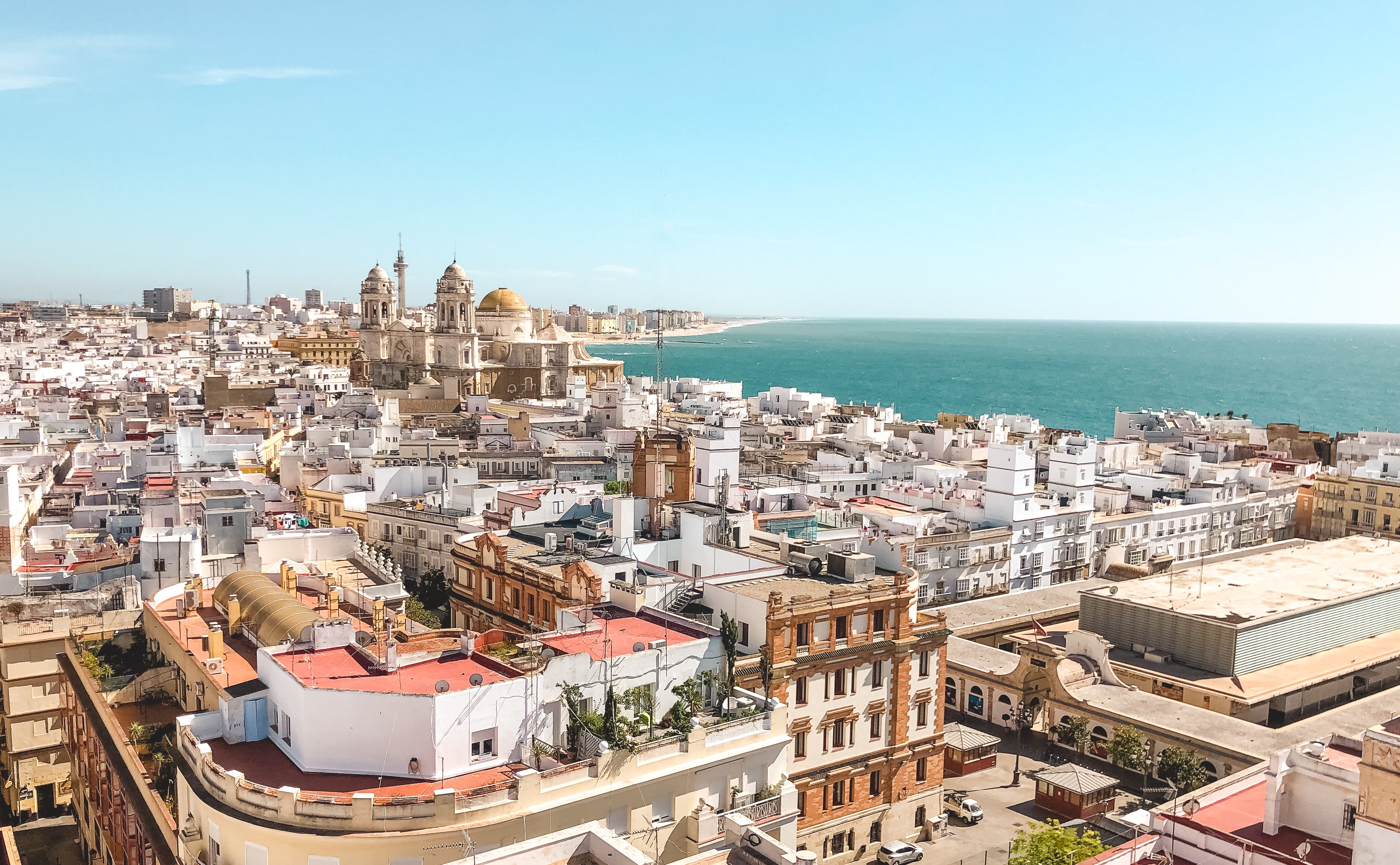Seville is often called the heart of southern Spain and the pearl of Andalusia. Within a few hours of arriving, we understood why. Seville is an exotic old city that reverberates with history, culture, and passion. It was once the residence of kings and caliphs who constructed resplendent palaces, colossal cathedrals, and expansive ports through which the riches of the world flowed into Spain. From here, generations of royalty ruled over empires, and each left their mark on the monuments, customs, and celebrations that still exist today. This was also the birthplace of the quintessential Spanish tradition of flamenco.
Seville was the fourth stop on our tour of Spain, after we had visited Madrid, Barcelona, and Montserrat. Because so much of Seville’s charm stems from its past, and because its legacy as a show-stopping Moorish capital was what drew us there, I’m going to begin this travel guide with some fascinating historical context.
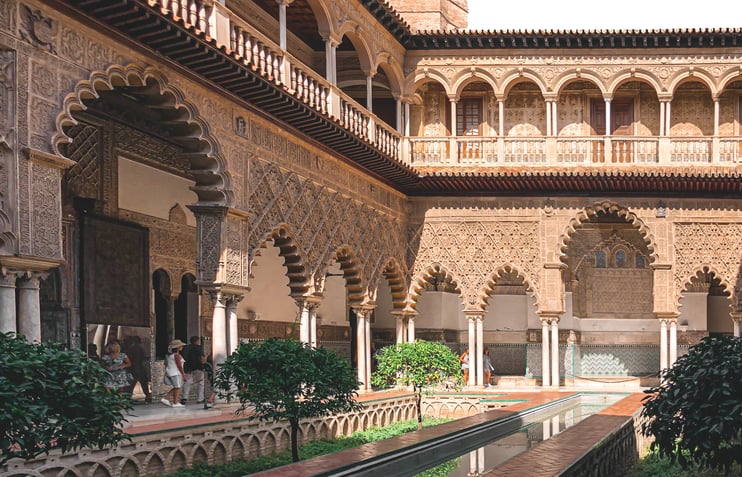
The Alcázar of Seville, a fortress and palace with Moorish origins
Section overview
- Brief history → Seville's development during the Muslim reign
- What to expect → Lingering Islamic influences, customs, and tips to fit in
- When to go → How to avoid the scorching heat, high prices, and festival crowds
- Where to stay → The best hotel from an architectural and location perspective
- Where to eat → Restaurant recommendations for brunch, tapas, and comfort food
- What to see → Alluring landmarks and experiences that exemplify Seville's beauty
A brief history: The capital of caliphates
Seville dates back to the 8th century BC. It was originally called Hisbaal and inhabited by an indigenous Iberian people. After being declared a Roman colony by Julius Caesar, its name was latinized to Hispalis and it started to develop into a major industrial hub. Then, the region was ruled by Visigoths and Christians in the Middle Ages until it was taken by the Moors (Berbers and Arabs from North Africa and the Middle East) in 711. Under Muslim reign, the name was adapted into Arabic as Ishbiliyah, which turned into Sivilia, and eventually became the “Sevilla” we know today through one of the early games of broken telephone.
Seville was the first capital of the Islamic kingdom of Al-Andulas, ruled by the Umayyad dynasty of the Caliphate of Córdoba. Later on, it became the independent Taifa of Seville.
As part of the Caliphate of Córdoba, Seville flourished economically and culturally with the expansion of Islam. During this time, the architecture underwent a transformation, and scientific exchange and cooperation also increased between the Muslim and Christian lands around the Mediterranean Sea. One Muslim Sevillean agriculturalist, Abū Zakariyah al-Awwam, is credited for identifying nearly 600 plants and developing new methods of grafting!
The Taifa period was marked by the construction of Seville’s treasures, like the Great Mosque and minaret, and the Real Alcázar. But without a central authority, infighting and division (why can't we all get along 🤦🏽♀️) led to the downfall of the Muslim era and Seville was retaken by the Christian King Ferdinand III of Castile in 1248.
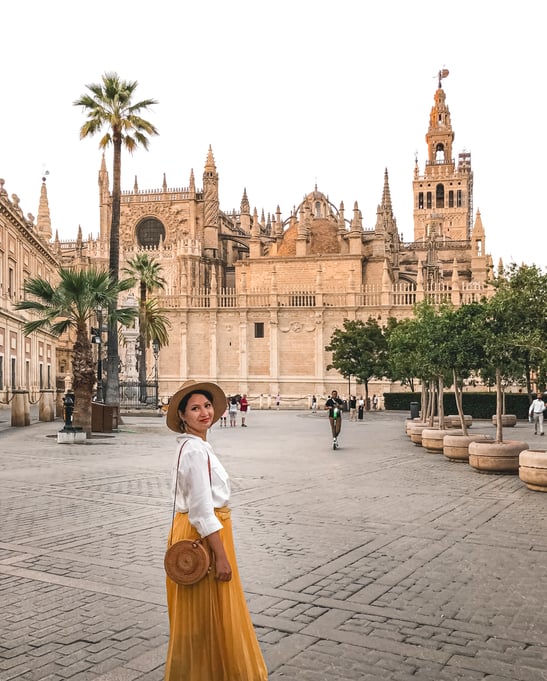
In front of Seville Cathedral, which was once the Great Mosque of Seville
What to expect
Muslim influences linger in the architecture and customs that still exist, although they have been adapted for Catholicism, which is now the dominant religion. For example, the Great Almohad Mosque was converted into the Seville Cathedral and its spaces were reoriented to suit Christian worship practices. The Giralda, the Cathedral’s current bell tower, was once the minaret of the old mosque. And the custom of decorating courtyards with plants and small fountains was inspired by the Moorish aesthetic.
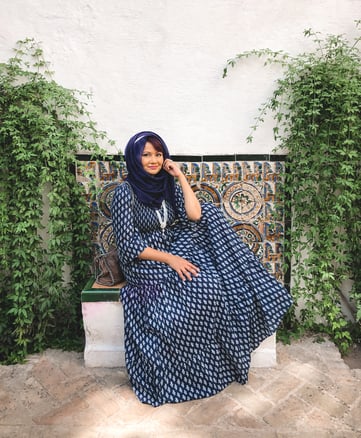
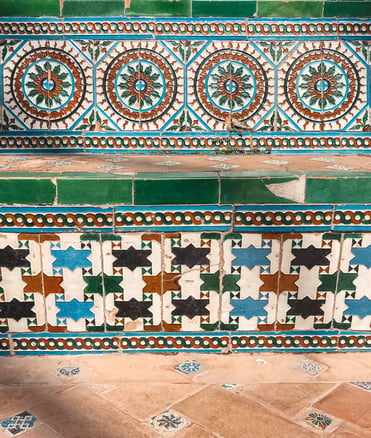
Potted plants, Moorish mosaics and a Muslim princess in a Sevillian courtyard
As a Muslim, expect to feel a mix of emotions when visiting places like these. I felt excitement and awe seeing the magnificent impact our ancestors had on Seville, but also a tinge of sadness at how the Islamic monuments they left behind have been appropriated, partitioned, and repurposed.
Other things you should expect in Seville:
- The cobbled historic center is very walkable. You’ll spend most of your time in the historic center, and the best way to get around is on foot. There is little public transportation, and if you rent a car or grab a taxi, the ride will take you longer than walking because of the pedestrian traffic and one-way roads. Saad and I rented a car from the airport to get to our hotel, but then we walked to wherever else we needed to go. Wear comfortable shoes because the streets are cobbled.
- Horse-drawn carriages are everywhere, but avoid them. Speaking of transportation, I recommend avoiding a horse-drawn carriage tour. They may give you fairytale vibes, but they’re exploitative. Horses suffer exhaustion from pulling heavy loads over uneven roads, amongst loud cars, and in the heat - with restrictive harnesses. Please don’t support animal cruelty!
- Bullfights are a big part of the culture, but also avoid them. Speaking of animal cruelty, bullfighting is a blood sport that ends with the killing of a bull by a matador in a large arena for “entertainment.” Blood sports are both heartbreaking and forbidden in Islam.
- Flamenco is another big part of the culture. A relatively more “halal” cultural activity you can enjoy is flamenco, an expressive Spanish dance. Flamenco was born in Seville so this is the place to catch a performance. And I’ll give you a great recommendation on a venue later on in this post.
- Meals are eaten late (by Western standards). Forget about lunch at noon and dinner at six. Sevillians, like most people in Spain, eat lunch around 2 p.m. and dinner is served between 8:30 p.m. to midnight (yep, midnight!).
- Tipping is optional. Feel free to leave some change for great service, but tipping is not common amongst the locals.
- Things close for the afternoon siesta. Many shops, markets, schools, and businesses will close for a couple of hours between 2 p.m. to 5 p.m. following the tradition of siesta. This isn’t just about napping midday; the siesta also allows business owners to take a break and enjoy lunch with their families before coming back to work.
- The atmosphere is folksy and relaxed. Seville, and southern Spain in general, has a much more laid-back vibe than the bustling cities of Madrid and Barcelona. Things are slower, calmer, and chiller… except when festival season comes around because then Sevillians celebrate with vigor.
When to go
There are good and not-so-good times to visit Seville. First off, Seville is the hottest city in Europe meaning summers (especially if you dress modestly) will be scorching like the depths of jahannam. It’s so hot and arid with temperatures hovering in the high 90s Fahrenheit that even some locals close up shop and leave to breezier places. The best time to go is spring (March - May) or early fall (September - October). We visited Seville at the beginning of October and found the temperatures to be pleasant. There were also less crowds!
Travel tip: A word of advice for Muslim travelers, avoid Seville during Semana Santa (i.e. Holy Week), which is a 7-day religious festival that happens before Easter in April. Semana Santa is marked by processions and floats that depict scenes from Christianity. People dress in long tunics and pointy hats, carry heavy altars with images of Jesus and Mary (peace be upon them), and sing hymns down the streets. Also avoid Seville during Feria de Abril, which is another 7-day festival focused on partying revelry that happens in May. Feria de Abril includes parades, bullfights, and a vast area on the river is converted into a fairground. People stay up all night eating, drinking, and dancing. During both of these festivals, thousands of visitors flock to Seville (think long lines and higher prices), and the customs might make practicing Muslims a wee bit uncomfortable.
Where to stay
At the beginning of this travel guide, I mentioned that Seville was once the residence of royalty. The kings, queens, and imperial rulers of old ordered the construction of grand buildings in the city to display their wealth and status. One of those buildings was Hotel Alfonso XIII. Commissioned by the King of Spain to host international dignitaries for the Ibero-American Exposition (i.e. world’s fair) of 1929, Hotel Alfonso XIII is now a luxury Marriott property and the best place to stay in Seville.
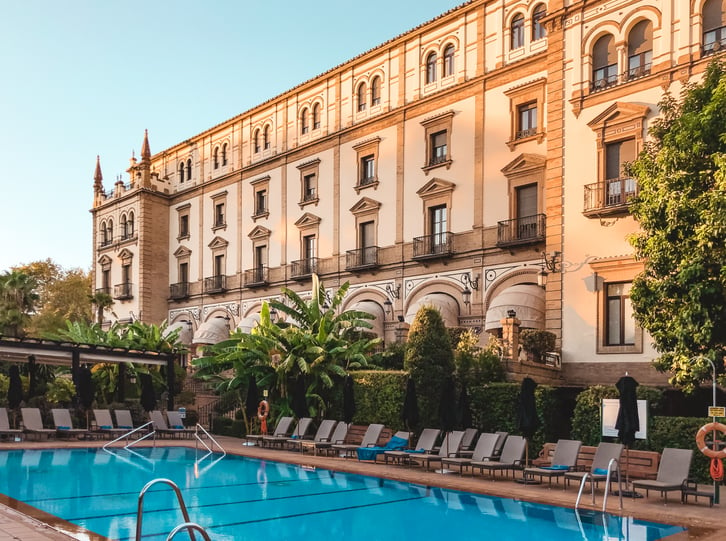
The facade of Hotel Alfonso XIII and its outdoor pool
The hotel looks and feels like a palace (which is obviously why I picked it), showcasing Andalusian design and Moorish detailing in the use of arches, columns, hanging lanterns and ornate tiles.
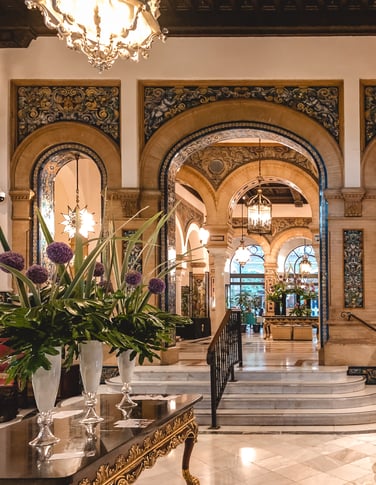
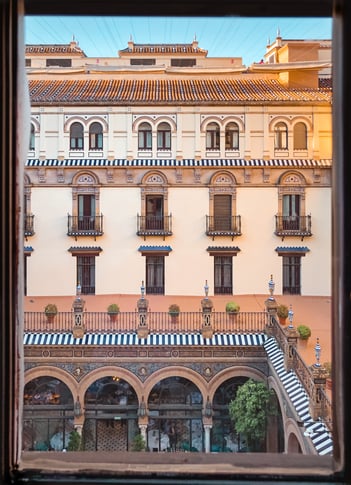
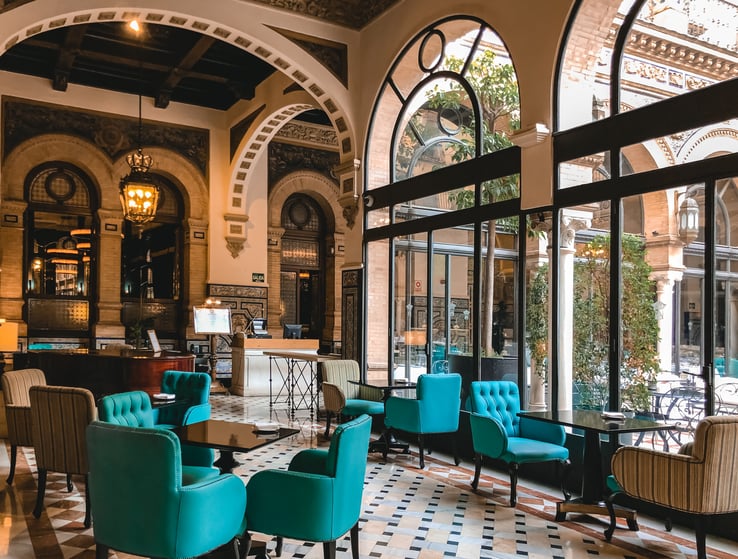
At the center of the hotel is a dreamy open-air courtyard where we enjoyed breakfast.
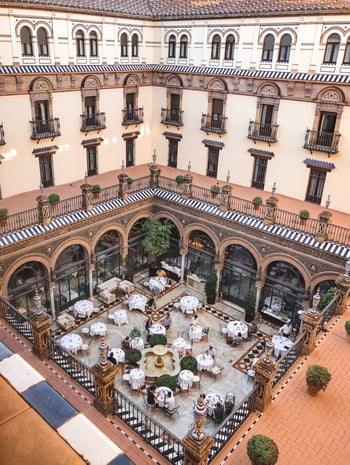
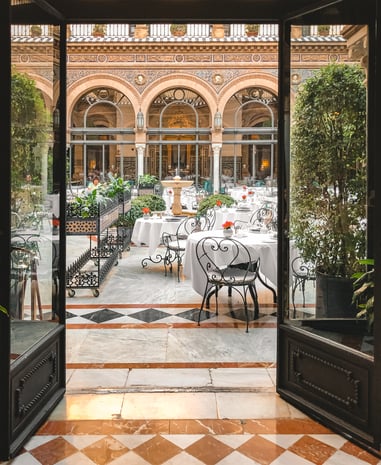
The courtyard is a wonderful place to enjoy the morning breakfast buffet under the sun
The spacious rooms also incorporate elegant furnishings, marble floors, and crystal chandeliers fit for nobility and celebrities (Princess Diana, Angelina Jolie, Brad Pitt… and Saad and I are all equally distinguished guests 🤣).
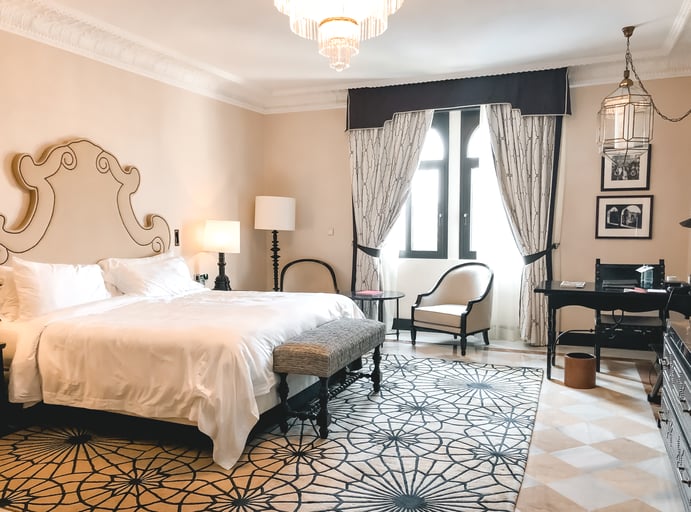
Our “grand deluxe” room
We loved staying at Hotel Alfonso XIII. Aside from its stunning architecture, this hotel is also located in the heart of the historic center just minutes from two main attractions in Seville (the Royal Alcázar and the cathedral). Restaurants, shops, and flamenco venues are nearby too. If you need it, the hotel offers parking.
Travel tip: Seville is a small city. We spent two nights here and were able to see everything. If you have time, I recommend spending three days in Seville so you can explore at a more comfortable pace and even squeeze in a day trip (like to Cadiz) or visit the soulful neighborhood of Triana across the Guadalquivir river.
Where to eat
Since Saad and I were only here for two days, we ate breakfast at the hotel out of convenience. However, if you want to venture outside the hotel grounds, I recommend Filo and Feria 83 for brunch. Filo (10 minute walk from Hotel Alfonso XIII) and Feria 83 (25 minute walk from Hotel Alfonso XIII) are both cute local cafes that offer a variety of eggs, smoothies, and morning pastries.
For dinner, we’re big fans of tapas, which are small plates with small portions of food. We made an effort to dine at tapas restaurants in every Spanish city we visited on this trip. In Seville, our favorite tapas restaurant was Castizo, which has a bold blue exterior and modern art deco interior. Some delicious, halal-friendly dishes at Castizo include cod and shrimp fritters, patatas bravas (spicy potatoes), a blooming onion with goat cheese, and sweet aubergine with cane honey and parmesan cheese. Another restaurant worth trying is Casa Manolo León, which is located inside a stately house and offers seating in its romantic courtyard under the shade of an orange tree.
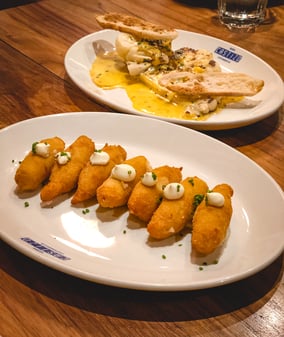
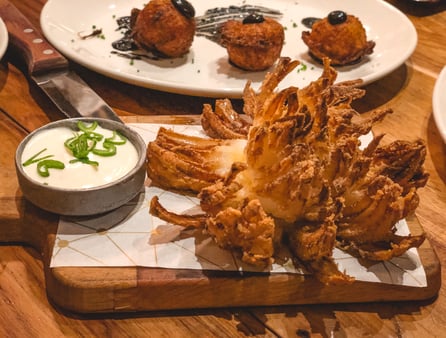
Seafood and vegetarian tapas at Castizo
One evening, to change things up, we tried a famous Italian restaurant in a rustic setting called San Marco. The menu was diverse enough to allow Saad to try paella, Spain’s most well-known entrée, while also offering options for non-paella eaters like me (I got ravioli). This is a good compromise restaurant if you want some familiar comfort food like pizza and pasta… but your husband wants paella piled with seafood.
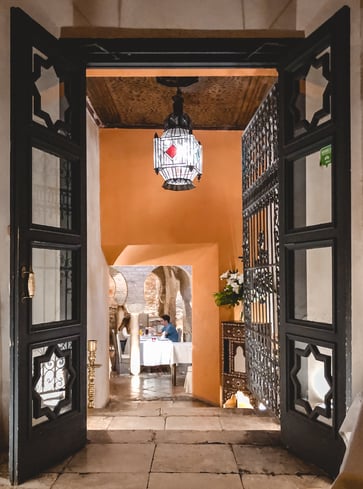
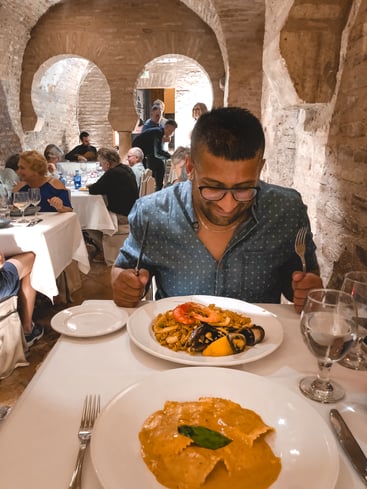
Paella and pasta at San Marco
Travel tip: If you find the online booking system confusing, Hotel Alfonso XIII’s concierge can help you make reservations at these restaurants.
What to see
Steeped in history, Seville is a blend of centuries-old architecture and traditions, mixed with a modern vivacity. It reminded me of a place out of a storybook. I woke up to the sound of horse carriages trotting down the street and the merriment of people strolling around the squares. In this section, I’ll take you through the sites and experiences that are emblematic of Seville’s unique charm.
Royal Alcázar of Seville
The Royal Alcázar of Seville (also called the Real Alcázar) was the first monument we explored. Now, you may be wondering, what the heck is an alcázar? I had the same question. Derived from the Arabic word “al-qaṣr,” an alcázar is a castle or palace that was built during the Muslim rule of the Iberian peninsula as homes for its leaders and government.
The origin of the Alcázar of Seville goes back to 913, when the first caliph of the Caliphate of Córdoba constructed a fortress at this location. During the Taifa period, the complex was expanded into a palace called “Al Mubarak” and new structures were added, such as a large courtyard and a congregational mosque. With the start of the Christian era, the Alcázar was converted into a residence for Christian monarchs, a role it still retains.
The intricate architecture of the Royal Alcázar is spectacular - a deliberate fusion of Muslim and Christian styles unique to Andalusia known as “mudéjar.” What’s interesting is that most of the Islamic art of the Alcázar that you see today was actually produced by Christian kings who were heavily influenced by the Iberian rulers that came before them.
Let me show you a few examples.
The Palace of Pedro
In the 14th century, King Don Pedro, leveraging his alliance with the Muslim emir of Granada, requested craftsman who had decorated the Alhambra to help build his own Mudéjar Palace in Seville. The palace’s facade shows how collaborative this project was because there is a Spanish inscription that states, “The highest, noblest, and most powerful conqueror Don Pedro, by God’s grace King of Castile and León” and another one in Arabic calligraphy proclaiming “There is no victory without Allah.”
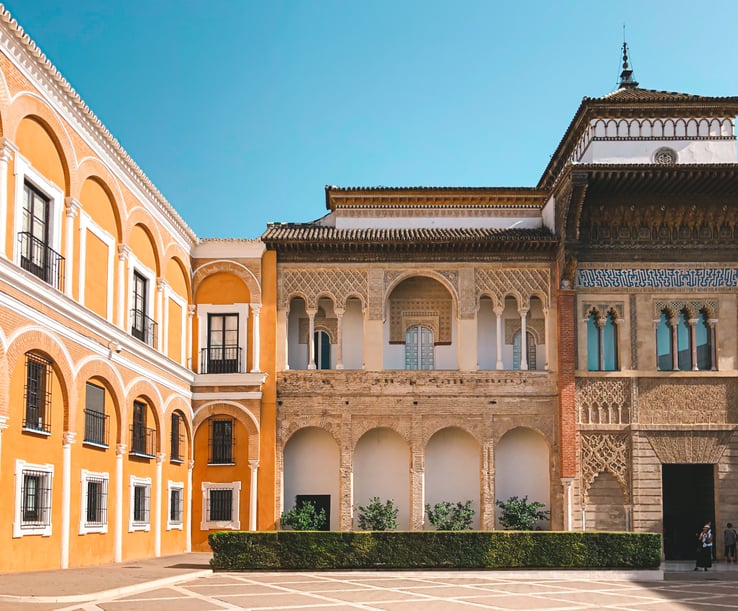
The Mudéjar Palace complex within the Royal Alcázar of Seville (you can see part of the Kufic inscription in blue on the right)
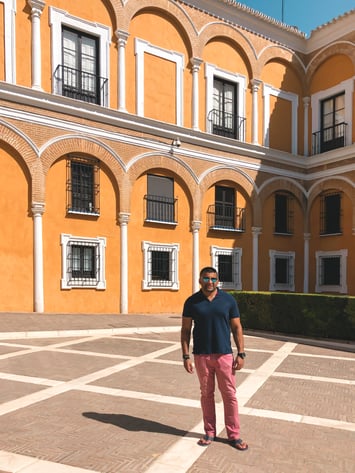
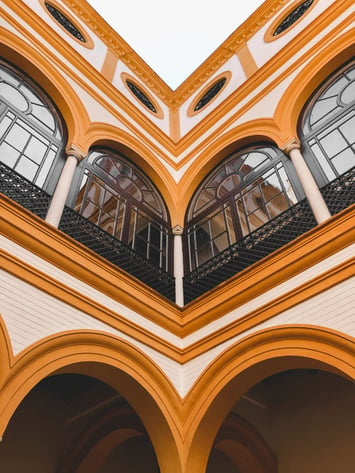
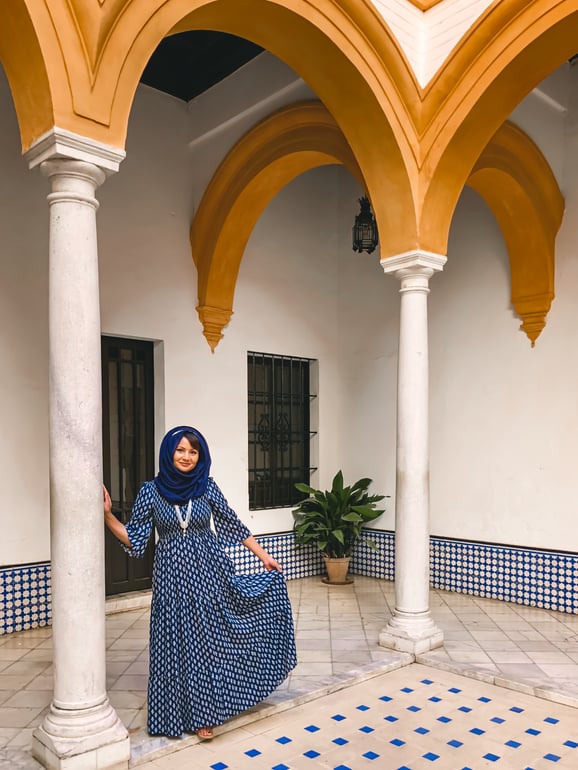
The Courtyard of the Maidens
One of the jewels of the Alcázar is the Courtyard of the Maidens, named after the wild myth that the Muslim Moors demanded an annual tribute of 100 virgins. In the middle of this courtyard is a long, rectangular reflecting pool surrounded by a sunken garden. Another distinctly Islamic architectural element you’ll see here is the use of interlocking arches decorated with beautiful plaster work.
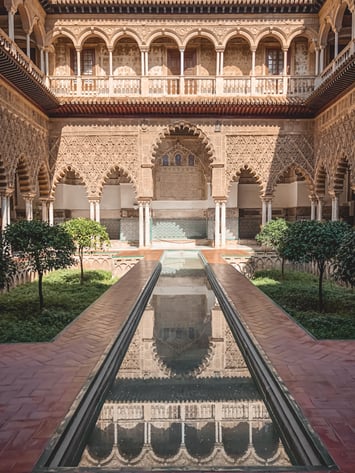
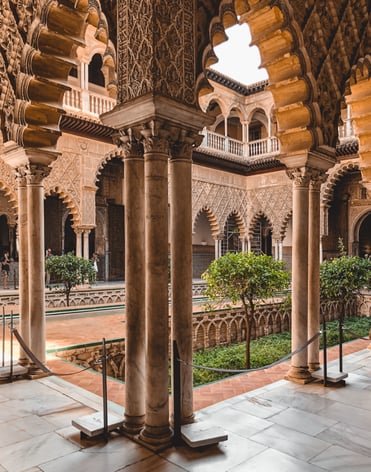
The Courtyard of the Maidens within the Royal Alcázar
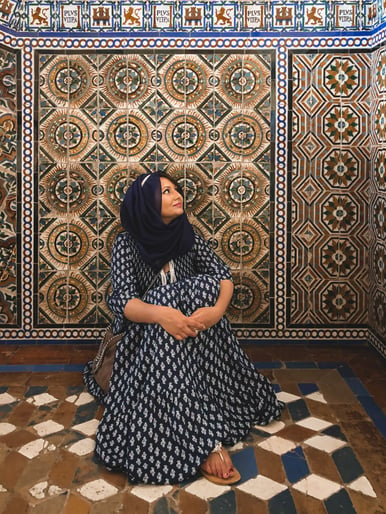
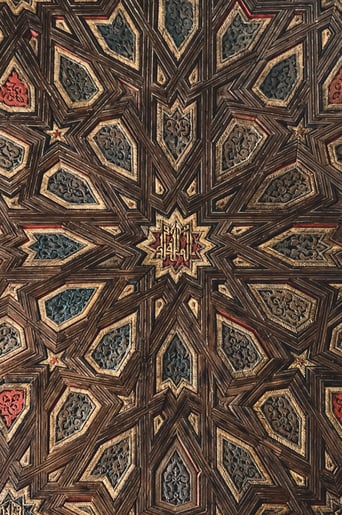
If you look closely enough, you’ll find Islamic ornamentation and designs in even the most subtle details of the Alcázar. Saad and I found this tiny bit of Arabic calligraphy on some woodwork that we think says “Allah.”
The Hall of Ambassadors
The most magnificent room in the Royal Alcázar is the Hall of Ambassadors. Initially, this was the ancient throne room for Muslim rulers, but it was remodeled by King Pedro as the centerprise of his Mudéjar Palace where he would receive important visitors and dignitaries. During the remodel, plant and geometric motifs were added to the plasterwork, the walls were adorned with tiled panels, the orientation of the hall was changed from Mecca to northeast, and the ceiling was covered with a dome encircled by golden muqarnas. Muqarnas, which are “honeycomb” or “stalactite vaulting” are significant in Islamic architecture because they represent the vastness and complex creation of the universe by God.
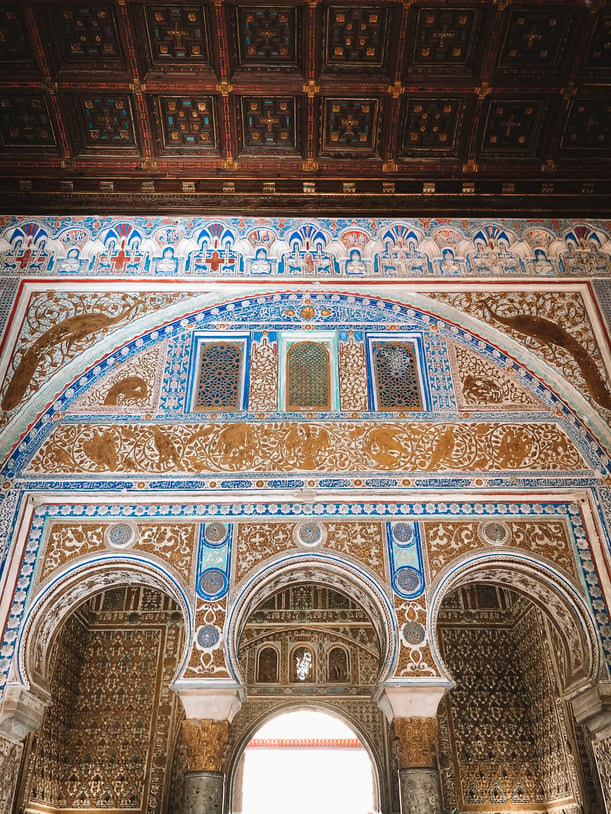
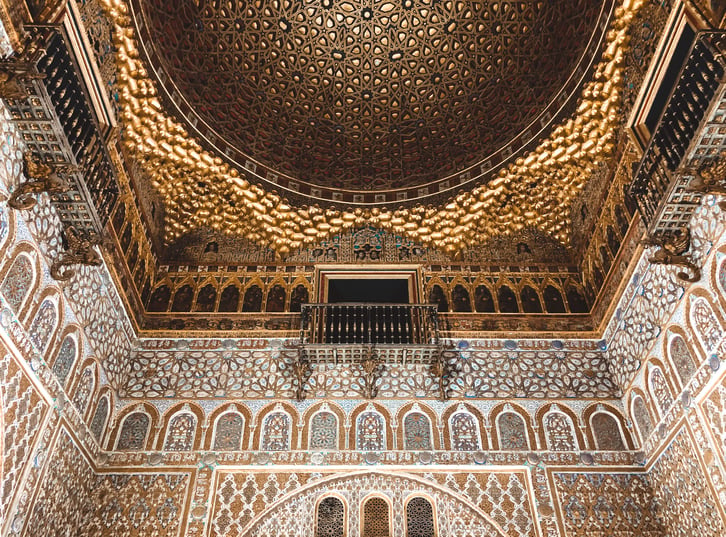
The Hall of Ambassadors’s architecture includes the use of muqarnas in a star pattern (above)
The gardens
The Royal Alcázar complex also includes many serene gardens, a common feature found in all Al-Andalus palaces. The gardens contain fruit trees, flowers, and water elements such as ponds, pools, fountains, and irrigation channels. The most notable update made after the Muslim era was the Grotto Gallery; an old wall was transformed into a raised gallery with Italian porticoes from where you can admire the view of the Alcázar’s gardens.
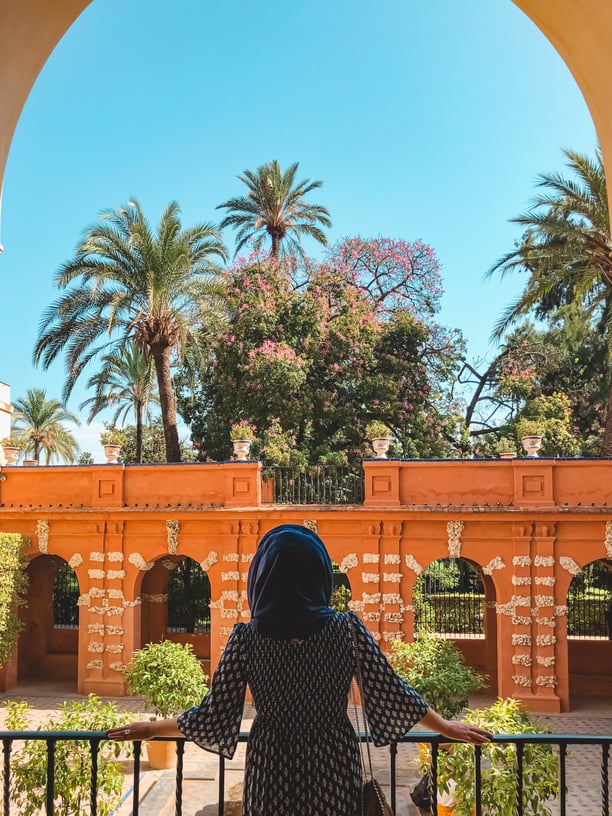
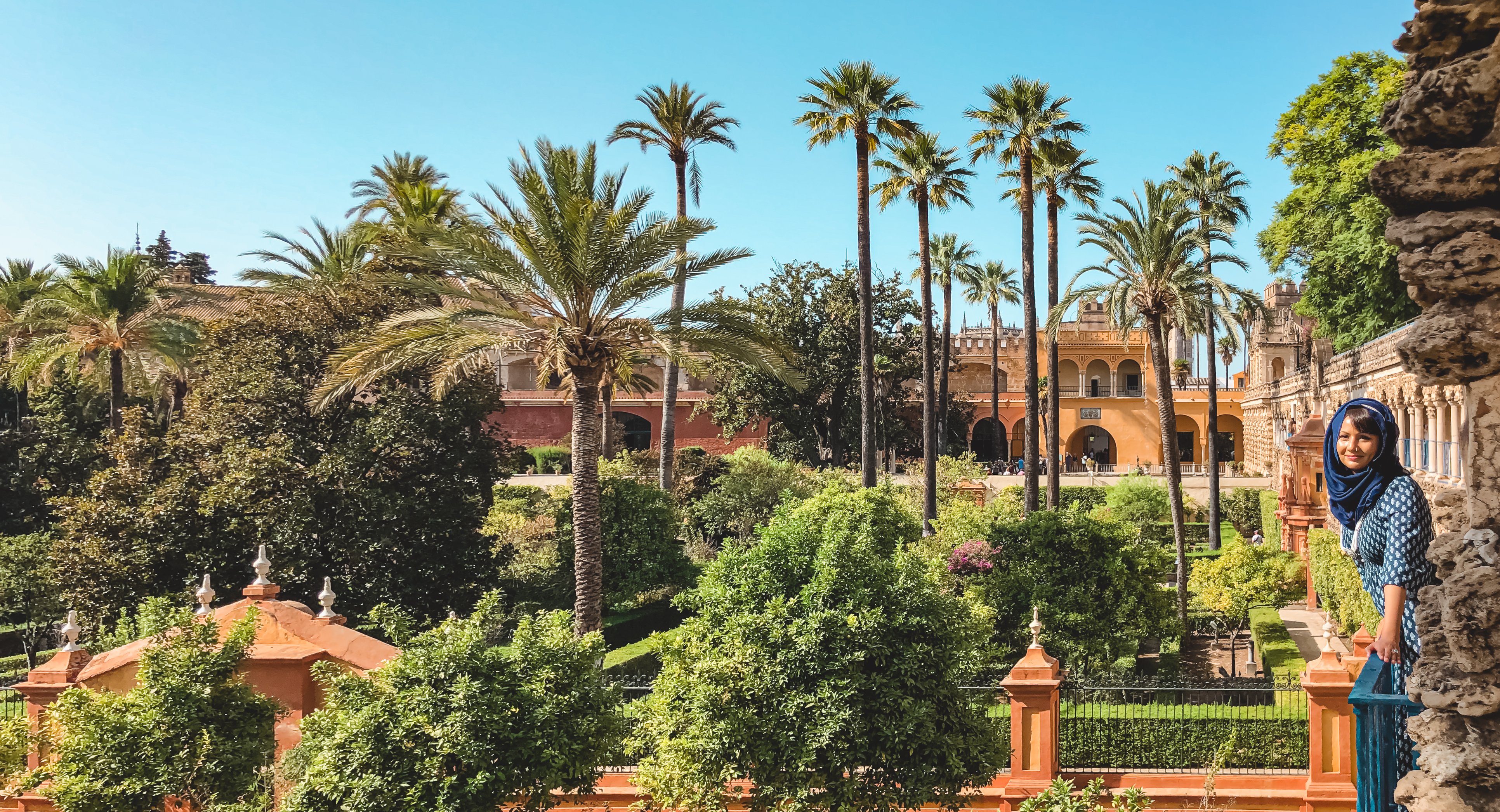
Looking out over the gardens from the Grotto Gallery
Travel tip: Buy your tickets online! It costs one more euro, but it will save you a ton of time because you can walk right in, instead of waiting in line at the entrance, which can take hours.
Seville Cathedral
Next to the Royal Alcázar is the colossal Seville Cathedral, the largest Gothic cathedral in the world. The original structure that stood at this location was a mosque. After the reconquest of Spain, the mosque was christianized (it wasn’t demolished, but it underwent a complete redesign that lasted over 100 years). The direction of the mosque was changed away from Mecca, the spaces were divided into chapels, and Christian relics, statues, and imagery were added to the exterior and interior. Oh and a bunch of Christian kings, including the one who reconquered Seville (Ferdinand III of Castile), and Christopher Columbus, the explorer whose discovery of the New World contributed to Seville’s economic success, were entombed in the cathedral.
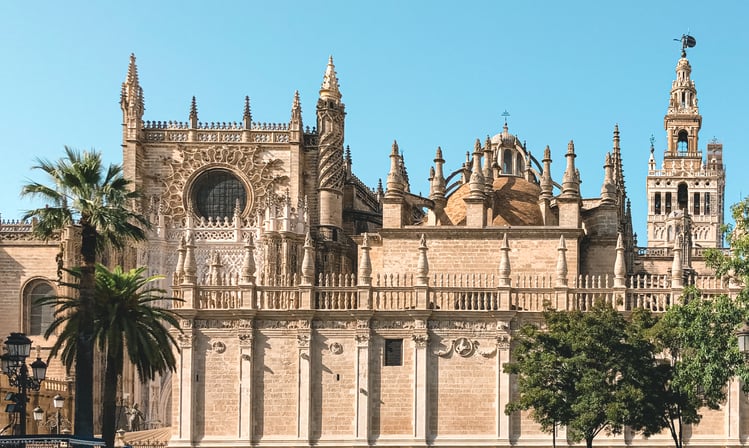
Seville Cathedral, once the site of the city’s great mosque (the Giralda, the mosque’s minaret, is the tower on the right)
However, a few parts of the old mosque survived. The most prominent is the Giralda, the church’s current bell tower, previously the mosque’s minaret. They added a statue on top of the minaret to represent the triumph of the Christian faith and clear up any lingering confusion as to which religion it now belongs to. Another part that survived is a horseshoe shaped arch that leads to the mosque’s former “sahn” - meaning the courtyard that was used for wudu (ablutions). These days, it contains a fountain and lots of orange trees.
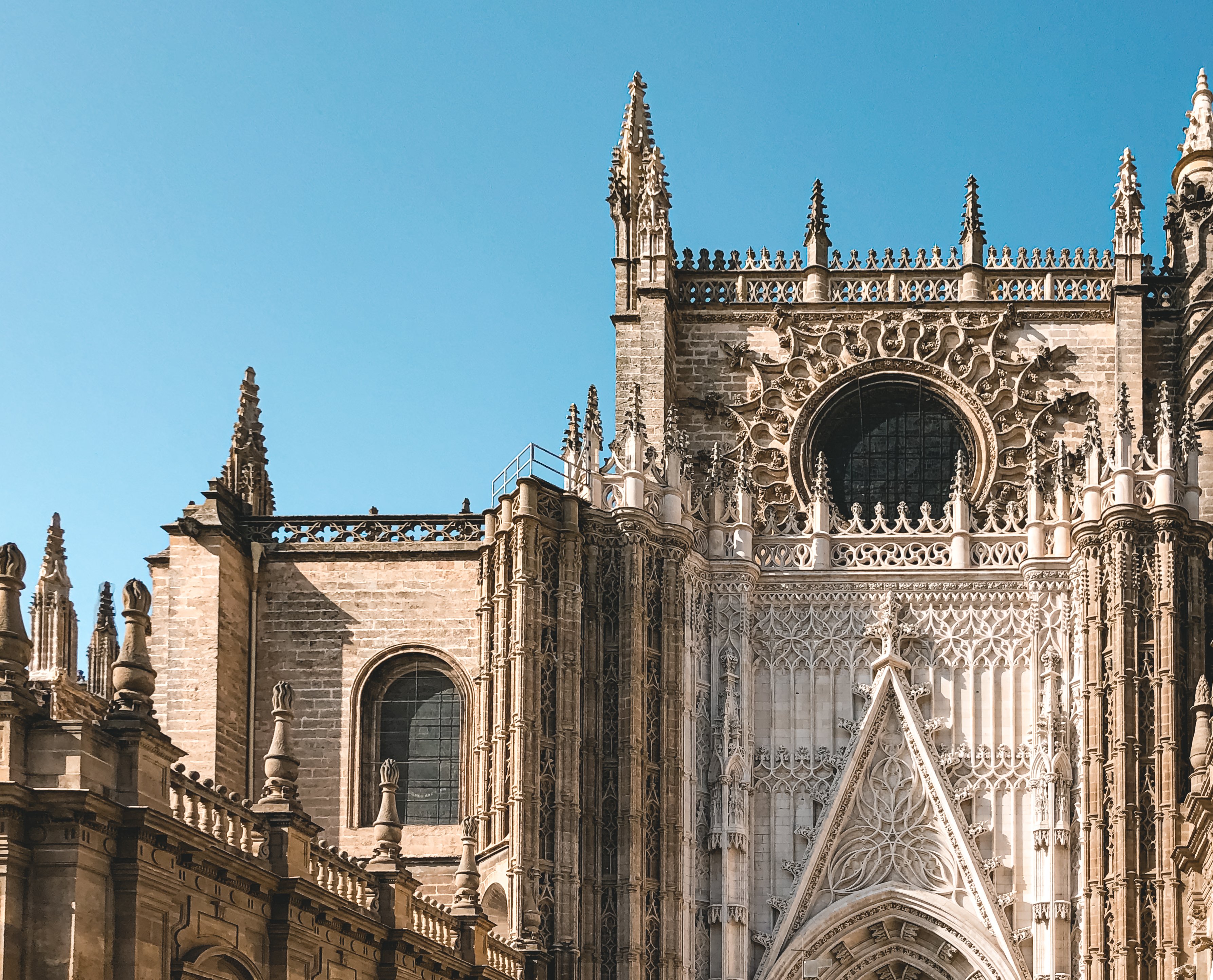
A closer view of the cathedral’s gothic architecture
Saad and I didn’t go inside the cathedral because we spent so much time exploring the Royal Alcázar… and then we got hungry, but it does hold a commanding position in Seville’s skyline.
Travel tip: Seville Cathedral is usually open 7 days a week until 7:30 pm. I recommend buying your tickets online. If you visit, climb to the top of the Giralda to get sweeping views of the city.
Plaza de España
The third architectural landmark we checked out was Plaza de España, a regal plaza that looks like it was built a long time ago by a prosperous imperial dynasty, or in a galaxy far, far away by people from a different planet. Fun fact: a portion of Star Wars was really filmed here. As it turns out, Plaza de España doesn’t have any mysterious or ancient origins. Nor was it part of any earthly or spatial empires. In reality, this imposing plaza has a relatively simple backstory - something that’s evident when you translate its name into English, which is “Spain Square.” Groundbreaking.
Plaza de España was built for the Ibero-American Exposition (a world’s fair) of 1929 to showcase a mix of regional Spanish architectural styles, including Moorish and Mudéjar. It has a semicircular floor plan flanked by two towers on each end.
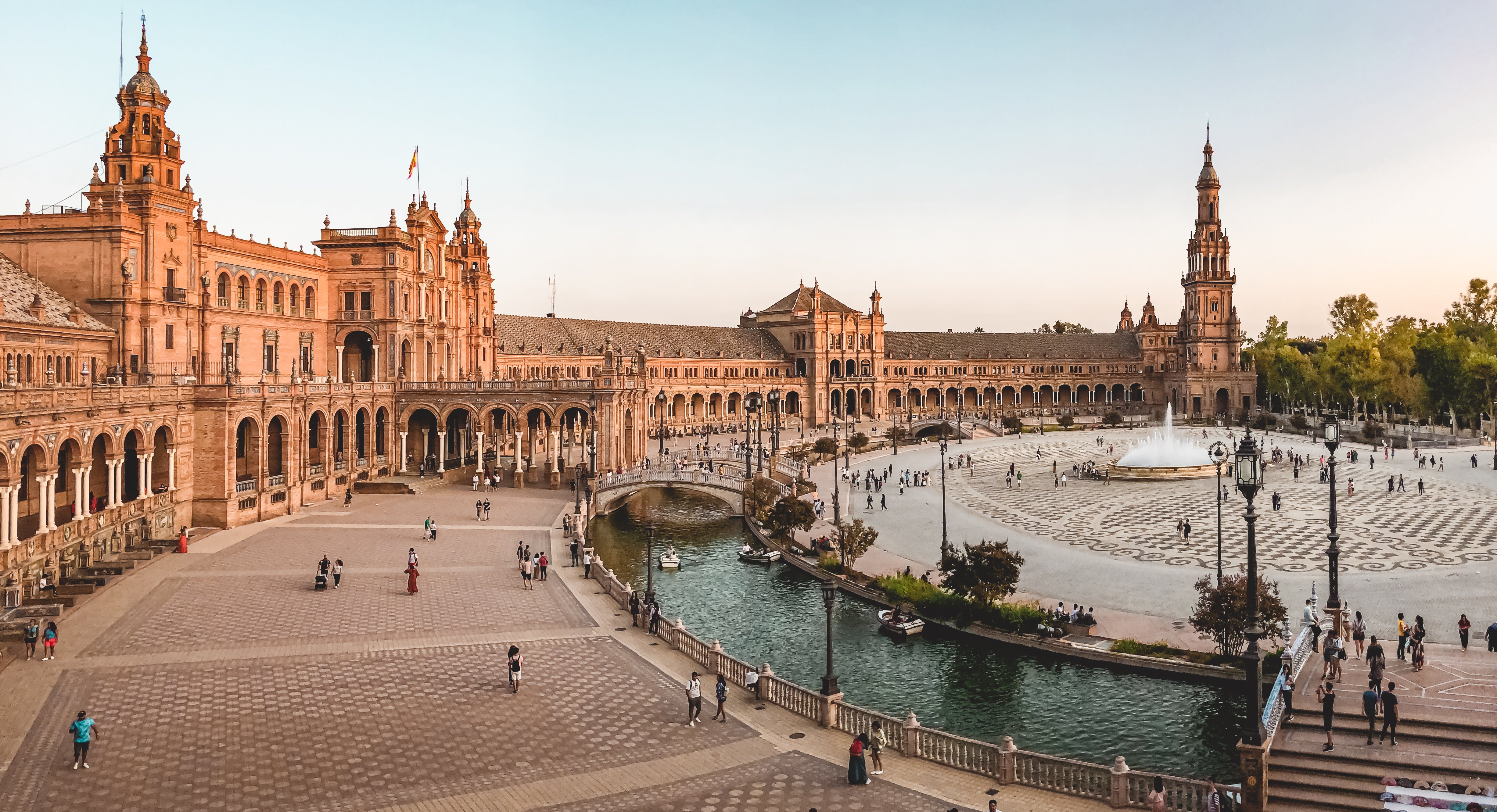
Plaza de España enveloped in the sunset glow
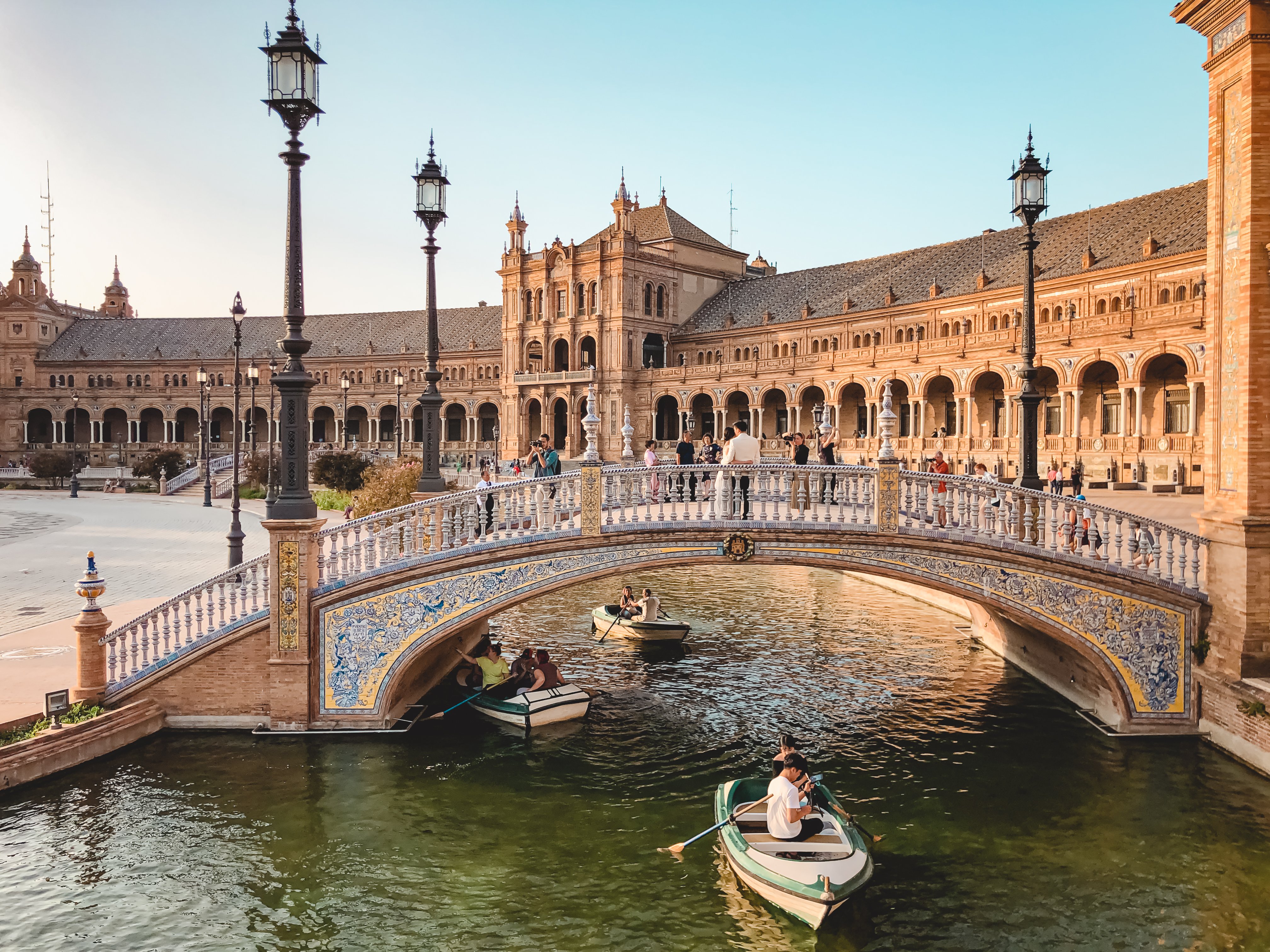
There is a canal along the perimeter with four bridges that represent the former kingdoms of Spain.
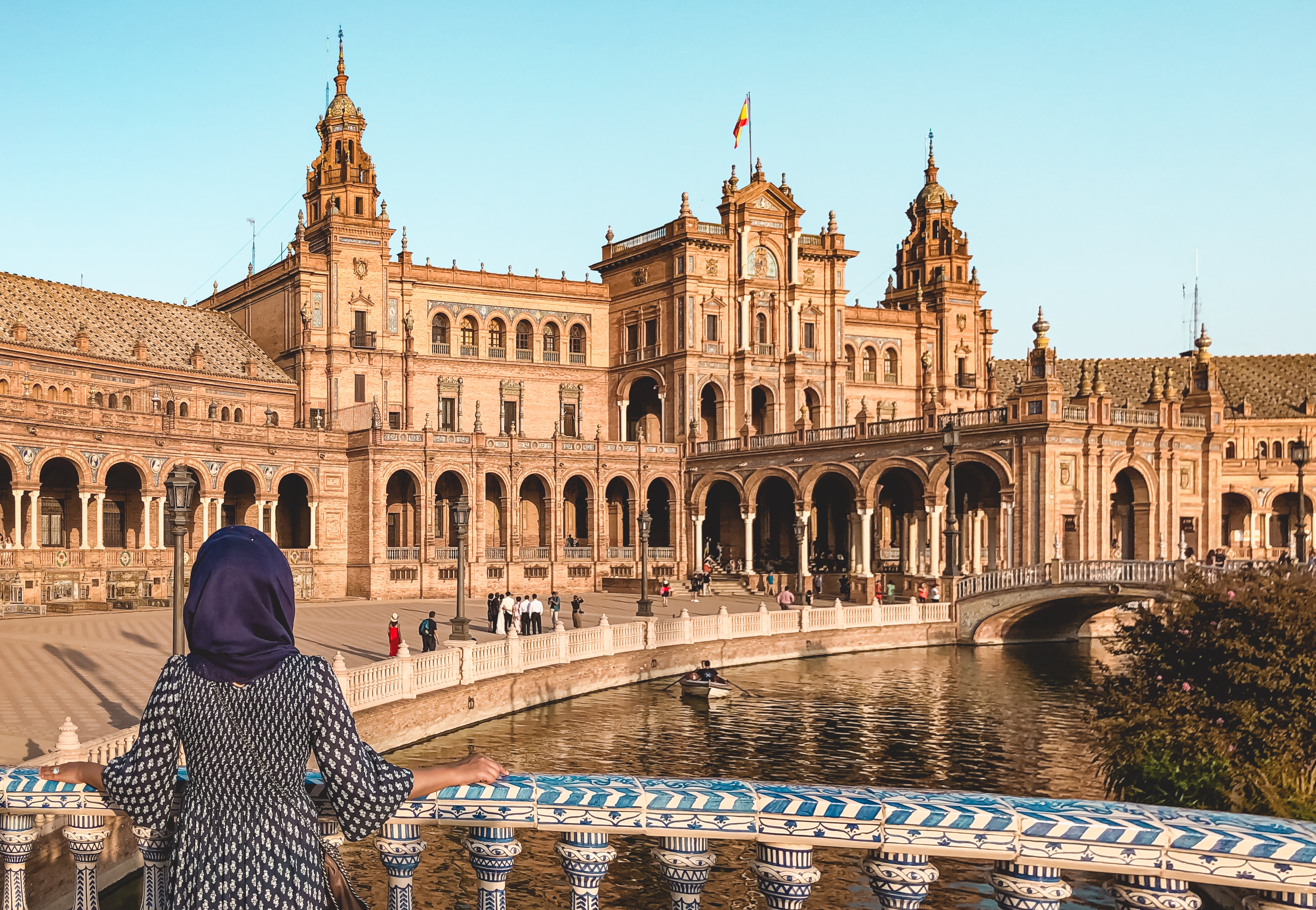
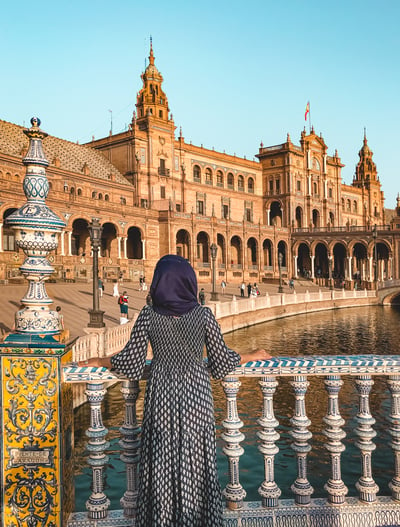
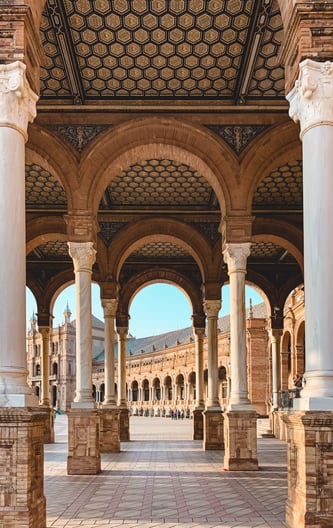
A cool component of the plaza are the 52 ceramic benches with azulejos (painted tiles) that represent the 52 provinces of Spain. This is where literally everyone takes their Instagram picture. Including us 🙈.
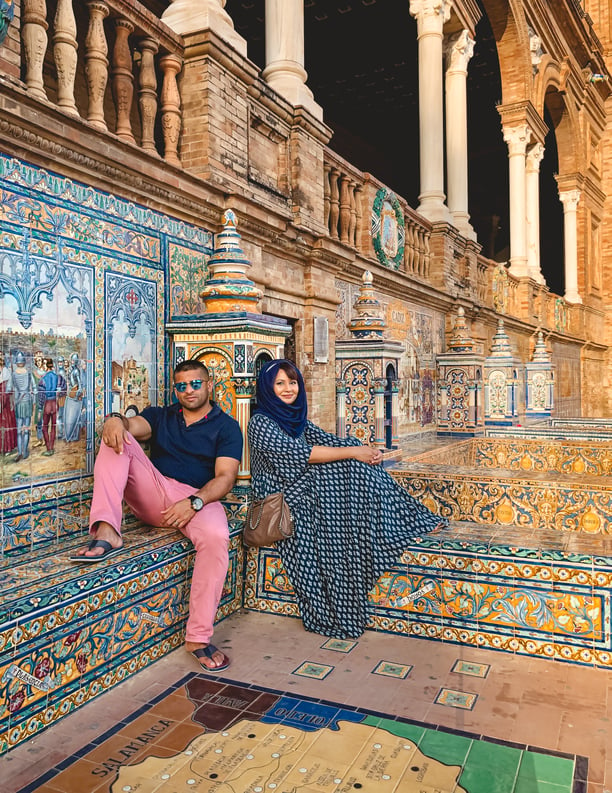
One of Plaza de España's tiled alcoves
Since the end of the expo, Plaza de España’s buildings have been used as offices for government agencies.
Travel tip: Plaza de España is a public space meaning there is no ticket requirement or admission fee (you can walk right into the plaza). Aside from strolling through the levels, admiring the architecture, and renting a rowboat for the canal (if you’re feeling extra touristy romantic), there is not much to do in the plaza - it’s a place to hang and people-watch. You might see some crowds gather around street performers, including flamenco dancers, but I strongly encourage you to save your money for a more intimate flamenco show, which I’ll tell you about next.
Flamenco performance
Flamenco, the highly expressive and emotive Spanish art form, was born in Seville. According to legend, it developed from an intermingling of cultures between the Roma gypsies, Moors, and Sephardic Jews many centuries ago. Flamenco performances consist of live singing, instrumental music (mostly guitar), and passionate dancing characterized by rhythmic hand clapping, finger snapping, percussive footwork, and intricate body movements.
I watched a flamenco performance for the first time in Madrid and loved it. It was mesmerizing to behold in both the visual and audible sense. Given my high praise, Saad wanted to see it too, but we waited to watch it here in the city of its birth, in a “cave” located underneath the Museo del Baile Flamenco (a flamenco museum). In this exclusive, vaulted venue, we got to see flamenco up close in a setting as intriguing and intimate as the show itself.
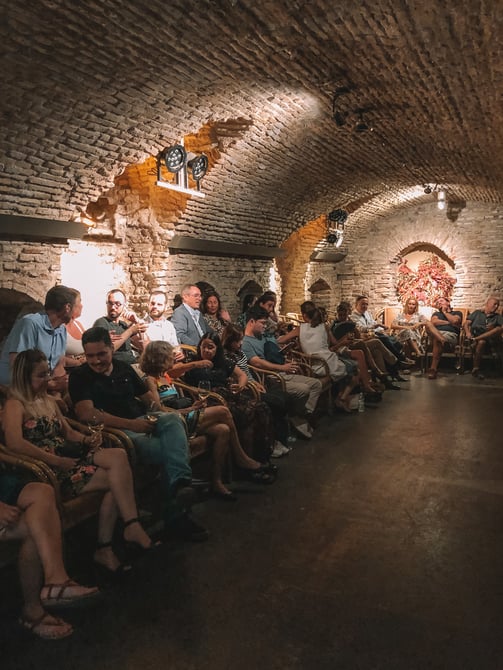
There are no photos or videos allowed during the show, but this is what the venue looks like
Travel tip: In my opinion, flamenco is a must-see in Seville and there’s no better place to watch a performance than at Museo del Baile Flamenco. The museum is walking distance from Hotel Alfonso XIII. The concierge can book your tickets, or you can reserve tickets online. Book in advance because the venue has a small capacity. Your ticket will include a free drink (yes, they have non-alcoholic options). Okay, now you may be thinking, “This is all helpful logistical information, but is flamenco halal Annum?! And can I take my kids?” Well, I’m not a religious scholar, and Saad and I consider ourselves to be moderate, modern practicing Muslims, so in a loose sense I would say yes. The dance is not sexual and the dancers do not wear revealing clothing, but it is a musical performance. Also, please don’t take young children to this venue. Not because there’s anything inappropriate, but because they’ll either get bored or overstimulated and they won’t understand what they’re seeing. Audience silence is critical to appreciating the art and letting the artists perform.
Other things to see
The sites and experiences that I listed above are the main activities to do in Seville. If you have extra time, you can also check out:
- Maria Luisa Park - Located near Plaza de España, this is a peaceful park full of tiled fountains, pavilions, ponds, and lush plant life
- The Mushrooms of Seville (Setas de Sevilla) - A funky wooden structure of parasols that look like giant mushrooms, juxtaposed with the old world architecture of the rest of Seville (the mushrooms have terraces that offer panoramic views of the city)
- Triana - a scruffy, soulful neighborhood across the Guadalquivir River with beautiful ceramic shops
Off to the White Towns
In Seville, we got our first real glimpse of Spain’s Islamic legacy. Even after the fall of the Muslim empire, the Moorish monuments and cultural influences from that moment in history remain as a testament to the impact our ancestors had on this southern Spanish city. Before heading to Córdoba and Granada to marvel at more Islamic architecture, we took a day trip from Seville to the white coastal city of Cádiz.
About Annum Munir
I’m a twenty-something Muslim blogger who’s guilty of falling in love with every place I visit. I’m always planning the next trip in my head and missing the last one in my heart. When I’m not off discovering new parts of our beautiful planet, you can find me happily immersed in an art project.
